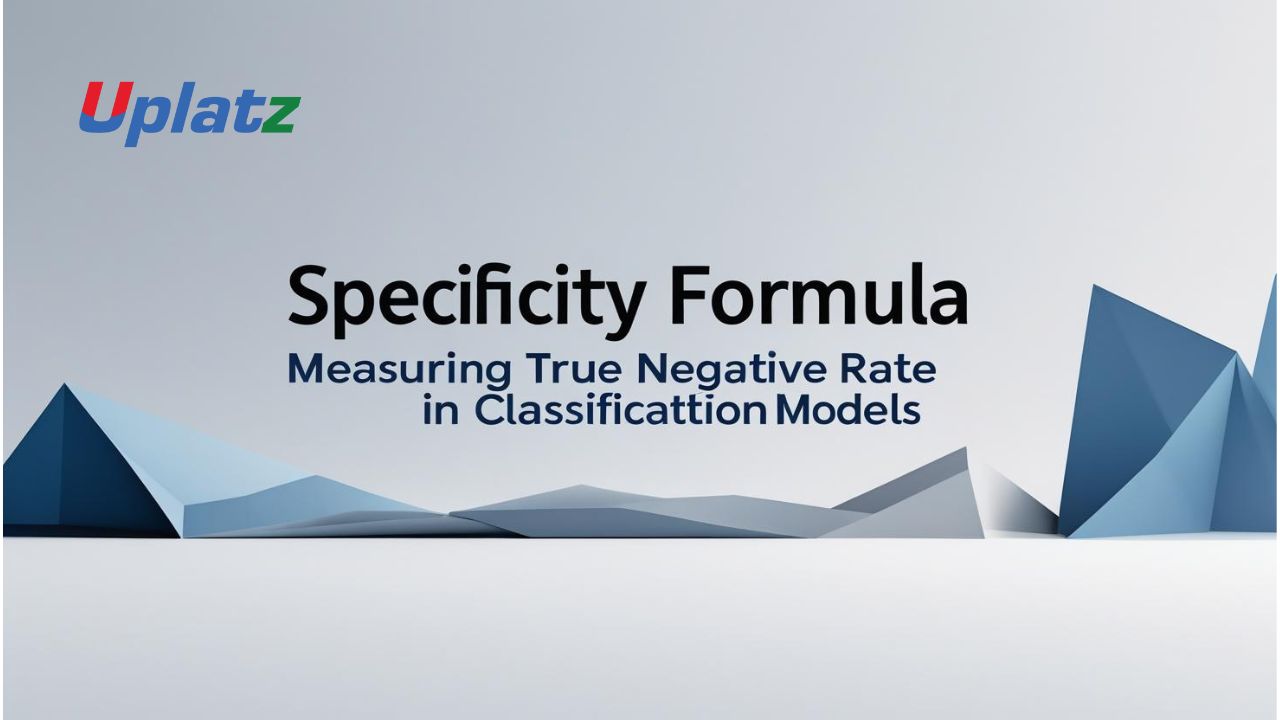 🔹 Short Description:
🔹 Short Description:
Specificity calculates how well a model identifies actual negatives, helping reduce false alarms in classification tasks.
🔹 Description (Plain Text):
The specificity formula is a critical metric in evaluating classification models, especially in situations where distinguishing the negatives correctly is as important as identifying the positives. It tells us the proportion of actual negative cases that were correctly predicted by the model.
Formula:
Specificity = TN / (TN + FP)
Where:
- TN (True Negatives) – Correctly predicted negative outcomes
- FP (False Positives) – Incorrectly predicted as positive when actually negative
Example:
In a spam detection system:
- Out of 1,000 emails, 900 are not spam (actual negatives)
- The model correctly identifies 850 of them as not spam (TN), but incorrectly labels 50 as spam (FP)
Then:
Specificity = 850 / (850 + 50) = 0.944 or 94.4%
Why Specificity Matters:
Specificity is especially important in binary classification problems where false positives must be minimized. For instance, in medical testing, a low specificity might result in healthy people being wrongly diagnosed, causing unnecessary stress, treatments, or follow-ups.
Unlike recall (which focuses on capturing all positives), specificity ensures your model doesn’t over-predict positives at the expense of wrongly flagging negatives.
Real-World Applications:
- Medical tests: Avoiding unnecessary treatments for healthy patients
- Email filtering: Ensuring important emails don’t go to the spam folder
- Security systems: Reducing false alarms in surveillance systems
- Loan approval systems: Not wrongly rejecting financially stable applicants
- Content moderation: Avoiding accidental blocking of harmless content
Key Insights:
- Specificity is the true negative rate — it measures model performance on negative cases
- High specificity = fewer false positives
- Often used alongside sensitivity (recall) to balance performance
- Helps create more trustworthy systems where over-flagging is a concern
- Complements precision, recall, and F1 Score for a full model evaluation
Limitations:
- Specificity doesn’t measure how well positives are detected (that’s recall’s job)
- Can be misleading in imbalanced datasets if not evaluated alongside other metrics
- A high specificity alone doesn’t mean a model is performing well overall
- Requires careful balance when false positives and false negatives have unequal consequences
Specificity helps ensure that your model isn’t just flagging everything as positive — it’s smart about what it chooses to ignore. It builds confidence in models that must say “no” responsibly, especially in sensitive domains.
🔹 Meta Title:
Specificity Formula – Minimize False Positives in Your Machine Learning Models
🔹 Meta Description:
Explore the specificity formula to evaluate how well your model detects actual negatives. Learn how specificity helps reduce false alarms in medical, security, and spam detection systems and why it’s key to trustworthy AI classification.
